Judi Lynn
Judi Lynn's JournalArgentine rights group confirms identity of 132nd child disappeared during country's dictatorship
‘The restitution of the identity of each one of them generates a deep emotion and joy in us,’ writes President Alberto Fernandez
29.12.2022
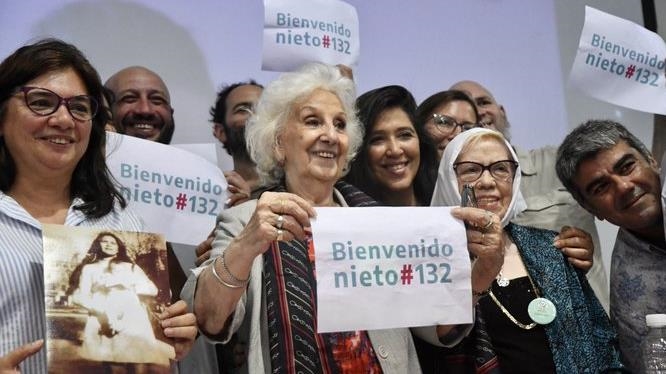
BUENOS AIRES
A prominent human rights group in Argentina announced the identity Wednesday of the 132nd child who was disappeared during the country’s dictatorship from 1976 to 1983.
The announcement by the president of the Grandmothers of the Plaza de Mayo, Estela de Carlotto, at a news conference, came after federal court No. 1 of Tucuman confirmed that Juan Jose, 46, was the son of Mercedes del Valle Morales Romero who was detained and disappeared in 1976 in a town in Tucuman province.
President Alberto Fernandez paid tribute to the work undertaken by the rights group.
"We close the year with more truth," he wrote on Twitter. "The restitution of the identity of each one of them generates a deep emotion and joy in us. Thank you for this tireless struggle, dear Grandmothers."
. . .
During the civil-military dictatorship, military officials periodically stole babies from political prisoners. The prisoners were often tortured, killed and disappeared.
The Grandmothers of Plaza de Mayo, a human rights group, was established to investigate disappearances and to determine what happened to the babies, whom they refer to as “grandchildren.”
More:
https://www.aa.com.tr/en/americas/argentine-rights-group-confirms-identity-of-132nd-child-disappeared-during-country-s-dictatorship/2774986
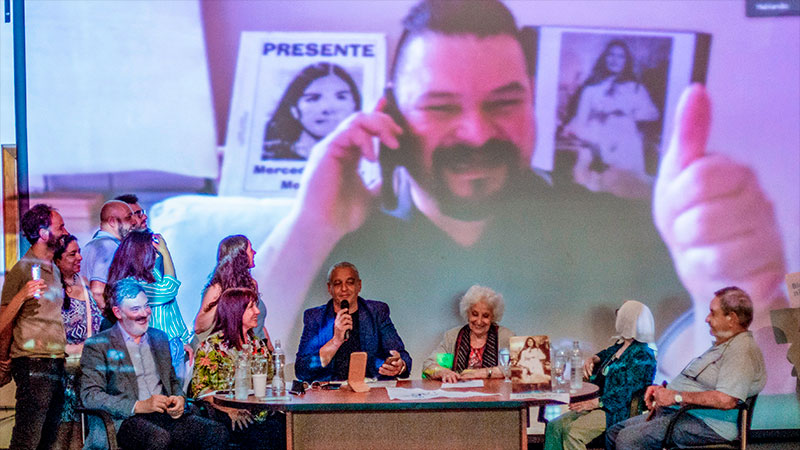

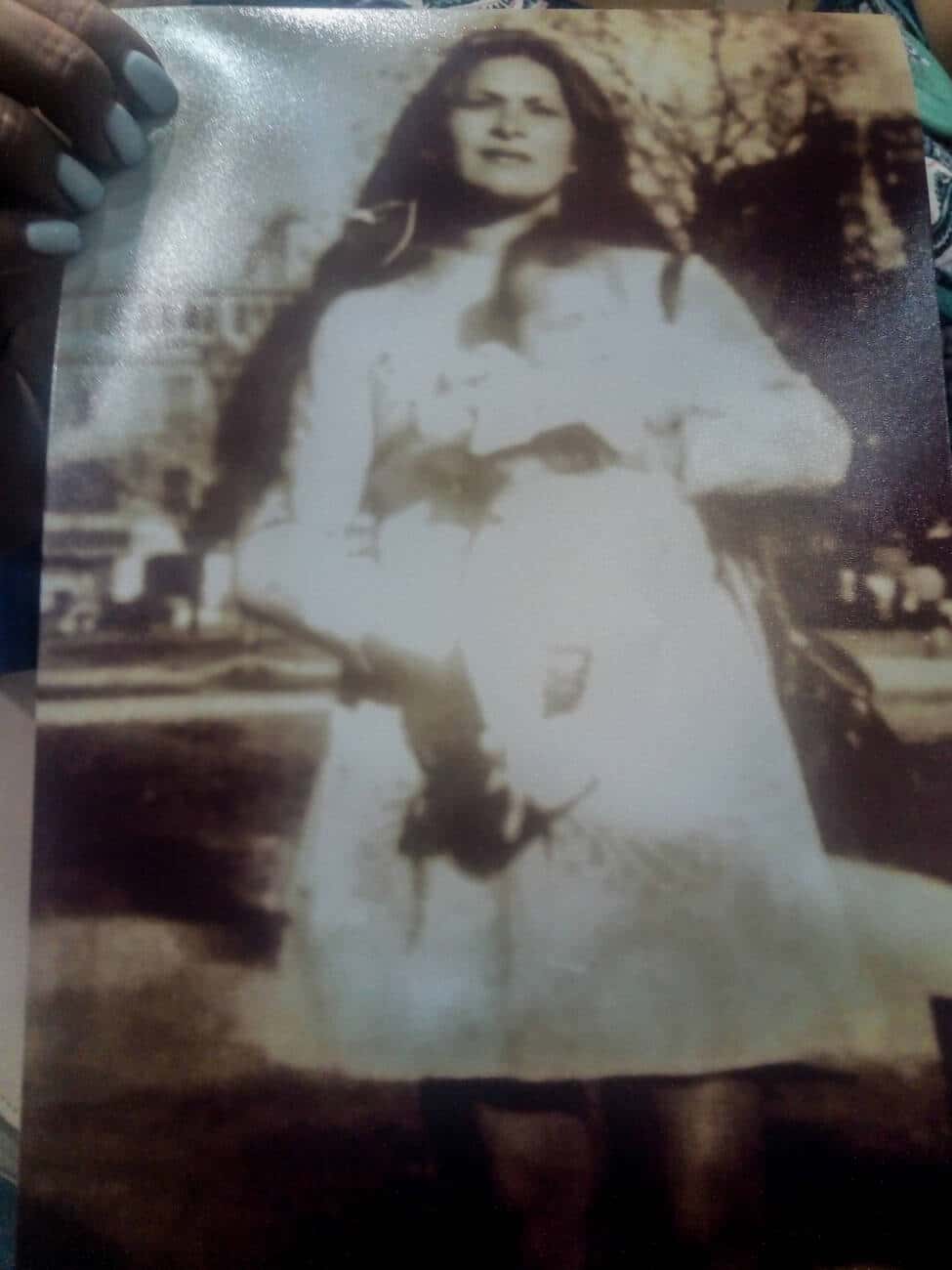
Mercedes del Valle Morales Romero
mother of Juan Jose Del Valle Morales Romero
The Musical World of Ernesto Cavour, Bolivia's Charango Maestro

Ana Díaz (Ernesto Cavour in the Museo de Instrumentos Musicales de Bolivia. La Paz, 2018)
By David Fegan 22 December, 2022
Once described as “the best in the universe” when it came to the charango, the small 10-string traditional Andean instrument, Ernesto Cavour could be found playing his beloved instrument and other musical creations at the Teatro del Charango in the highland city of La Paz every Saturday night. Sadly, the great maestro passed away in August, although I was lucky enough to interview Cavour in 2018 to discuss his colourful life, in which he succeeded in making his creative visions a beautiful musical reality.
Completely self-taught as a musician, Cavour cited “a strong and profound love and passion” as one of his biggest motivations from the moment he first picked up a charango as a boy in 1950s La Paz. His mother, who raised Cavour alone, didn’t want him to be a musician, “but I resisted and made promises,” Cavour recounted.
This wasn’t his only professional obstacle, however. “I was completely timid as a young person,” said Cavour. “I was scared to get up to the microphone and play… I found it impossible to play in public, and when I did manage to, I’d start to stutter. My voice, my fingers… nothing responded, to the point that I would play almost paralysed.”
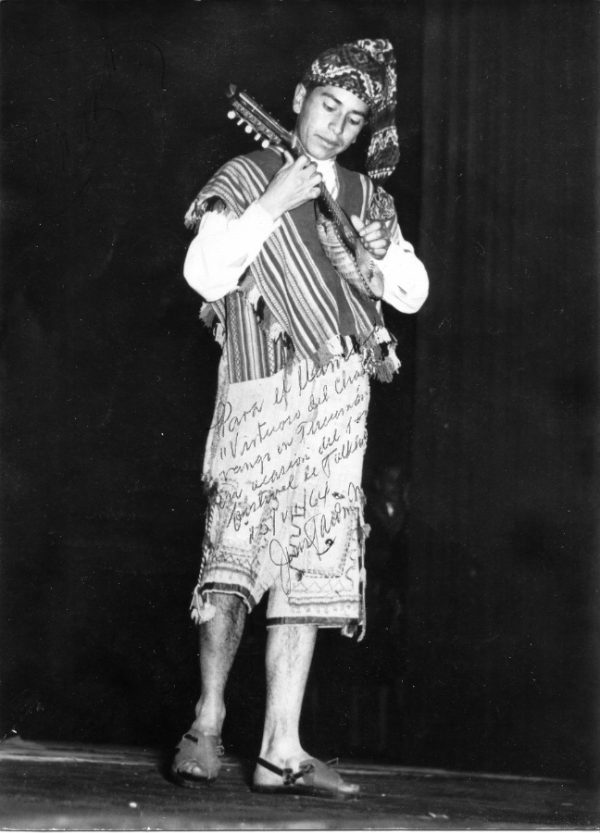
Cavour performing in the first Student Festival of Tucumán, Argentina, 1964. Photo: Archivo Histórico del Museo de Instrumentos Musicales de Bolivia ‘Ernesto Cavour Aramayo’
But with a successful career as a soloist as well as part of renowned groups such as Los Jairas and El Trío Dominguez, Favre, Cavour, how did he overcome this? “One day, a man who came to my house with my neighbour told me: ‘You play instruments well, why don’t you join the theatre?’ And I said ‘no, I’m too scared’. And he told me that I needed to socialise with music and art, that I couldn’t just play on my own. And that’s how I ended up joining the national ballet,” explained Cavour.
More:
https://soundsandcolours.com/subjects/music/the-musical-world-of-ernesto-cavour-bolivias-charango-maestro-72072/
NEOLIBERALISM'S IMPACT ON SOCIAL MOVEMENTS
BY ERIK LOOMIS / ON DECEMBER 19, 2022 / AT 3:04 PM
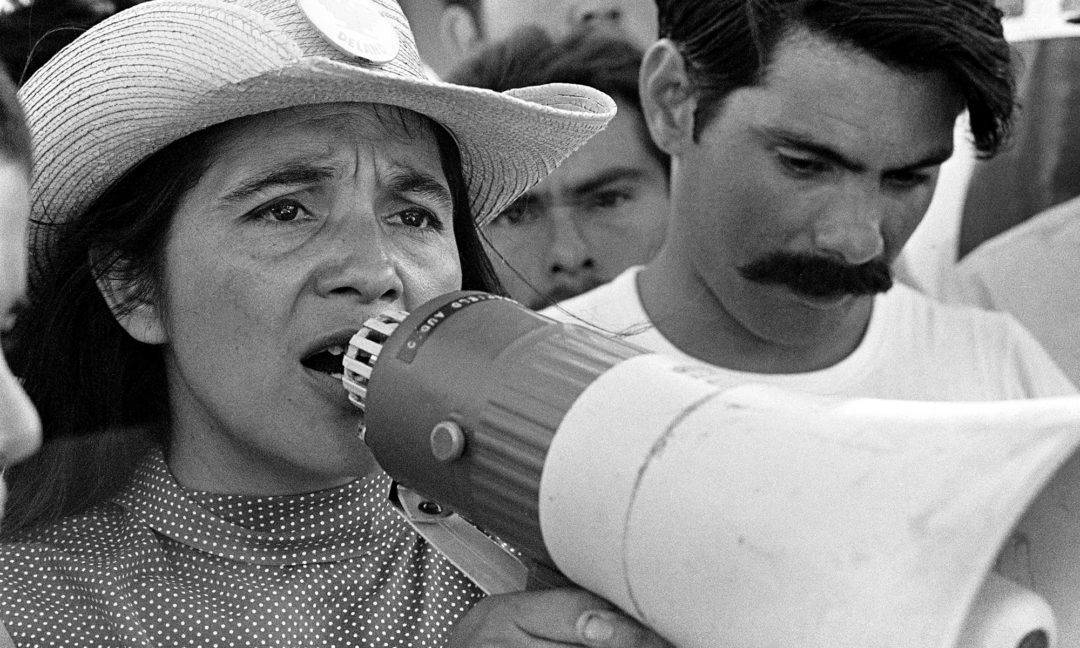
Coachella, CA: 1969. United Farm Workers Coachella March, Spring 1969. UFW leader, Dolores Huerta, organizing marchers on 2nd day of March Coachella. © 1976 George Ballis/Take Stock / The Image Works NOTE: The copyright notice must include “The Image Works” DO NOT SHORTEN THE NAME OF THE COMPANY
I am slightly hesitant to write about this here because of the reflexive anti-social movement, anti-left commenters that certainly do not make up everyone in this space, but who make up too many. But it’s the space I have so I will do so. Michelle Goldberg led us to this deep dive into the problems with contemporary organizing spaces by Working Families Party leader Maurice Mitchell. It really touches on a lot of things I’ve been concerned about for a long time. The most important of them is the impact of neoliberalism on our politics.
Now, since we are here and in a space where too many commenters like to think that “neoliberalism” is something made up by Bernie supporters, it is worth noting a few things. First, neoliberalism is real and it fundamentally means the privatization of public goods. But neoliberalism is more than just handing Bolivian water services over to a profit-making Bechtel. It’s also the ways in which the deification of the private has infected our society generally. The deification of the individual is not only exceptionally powerful in our society, but it’s now almost unquestioned. It’s had a huge deleterious impact on organizing because it undermines conversations between different people. It turns the idea of solidarity from something we need to do together to something I want you to do to support me without any required reciprocation on my part. It turns our politics into a sleeve tattoo, where we wear our ink for all to see and if someone doesn’t appreciate or recognize or prioritize my particular set of identities, then fuck them. Hard to win this way. It’s true enough in any case that on large parts of the left, especially in the mid 2010s, that neoliberalism was indeed used as a pejorative that meant “anything the Democrats do that I don’t like.” That was wrong and that was annoying. But it doesn’t mean that neoliberalism isn’t somehow real.
Anyway, I want to link to Mitchell’s articulation of this part of his essay.
Neoliberal Identity
Definition
Using one’s identity or personal experience as a justification for a political position. You may hear someone argue, “As a working-class, first-generation American, Southern woman…I say we have to vote no.” What’s implied is that one’s identity is a comprehensive validator of one’s political strategy—that identity is evidence of some intrinsic ideological or strategic legitimacy. Marginalized identity is deployed as a conveyor of a strategic truth that must simply be accepted. Likewise, historically privileged identities are essentialized, flattened, and frequently—for better or worse— dismissed.
Fallacies
To be clear, personal identity and individual experience are important. And while it is true that the “personal is political,” the personal cannot trump strategy nor should it overwhelm the collective interest. Identity is too broad a container to predict one’s politics or the validity of a particular position. There are over 40 million Black folk in the US. Some have great politics, some do not. One’s racial or gender identity, sex, or membership in any marginalized community is, in and of itself, insufficient information to position someone in leadership or mandate that their perspective be adopted.
People with marginal identities, as human beings, suffer all the frailties, inconsistencies, and failings of any other human. Genuflecting to individuals solely based on their socialized identities or personal stories deprives them of the conditions that sharpen arguments, develop skills, and win debates. We infantilize members of historically marginalized or oppressed groups by seeking to placate or pander instead of being in a right relationship, which requires struggle, debate, disagreement, and hard work. This type of false solidarity is a form of charity that weakens the individual and the collective. Finding authentic alignment and solidarity among diverse voices is serious labor. After all, “steel sharpens steel.”
Neoliberal identity politics strips from identity politics a focus on collective power or a political project and demand. What’s left is a narrow tool used as a personal cudgel or, as Barbara Smith has said, “It’s like they’ve taken the identity and left the politics on the floor.” It should be noted that we have already seen this tactic used against us on the Left and the Right in the fight for racial and economic justice. Identity in this context reaffirms the individualistic principles of neoliberalism instead of challenging them.
More:
https://www.lawyersgunsmoneyblog.com/2022/12/neoliberalisms-impact-on-social-movements
Settlements In Guatemala, Raising Questions About Past Settlements
Elle Yap / Dec 28 2022, 09:55PM EST

A group of researchers in Northern Guatemala using new technology have found a 2,000-year-old Mayan settlement that raises questions about how the people in the area lived their daily lives. This is a representational image. Laura LaBrie/Unsplash.
Researchers from France and the United States who are using new technology to survey an area in Northern Guatemala have announced on Wednesday that they have found an ancient Mayan settlement in the area that raises questions about the civilization’s past.
The survey of the remains of the settlement was done by a research team from the U.S. and France led by Idaho State University archaeologist Richard D. Hansen, exploring the Mirador-Calakmul Karst Basin in Northern Guatemala and finding 964 new settlements that have been hidden from archeologists for years, according to Artnet News.
The team was using LiDAR technology, short for Light Detection and Ranging, to survey the area better. Hansen’s team remarked that the technology being used is better suited for archeological digs in Central and South America due to their ability to see through the vast rainforests of the region, ARTnews reported.
Using the LiDAR technology, they were able to create a three-dimensional model of the settlements that were buried in the area, and found a 2,000-year-old Mayan settlement in the area that raises question about the current prevailing theories about the Mayan civilization that we have today.
The LiDAR technology established that some settlements which would have been seen as separate from each other in previous digs might actually have been interconnected due to finding miles of raised beds. These may have been used as roads that suggested “a social and economic cohesion that exceed those of lesser polities during these periods.”
Also found during the study were around 30 ball courts, which suggested that these ancient Mayan settlements were advanced enough to have areas made specifically for play and relaxation through ancient Mesoamerican sports. A huge 230-foot pyramid was also discovered in the area, further suggesting a centralized system.
More:
https://www.latintimes.com/researchers-find-2000-year-old-mayan-settlements-guatemala-raising-questions-about-538719
Overthrow of President Castillo Exposes the Race and Class Divide in Peru
By Francesca Emanuele
December 25, 2022
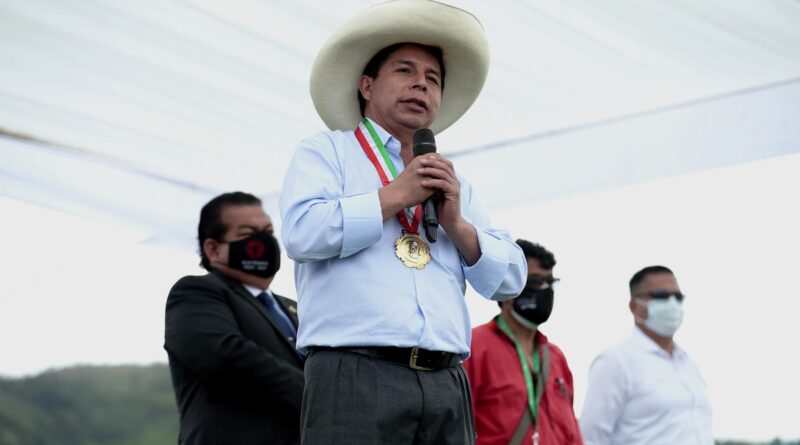
Unfulfilled campaign promises, accusations of corruption, and even an attempted self-coup cannot turn the many supporters of Peruvian President Pedro Castillo against him. The president has probably ceased to represent hopes for change, but he still symbolizes —perhaps more now than ever— structural discrimination in Peru.
In Lima, the political, economic, and intellectual elites are intrigued. They wonder why the majority of Peruvians in the streets are demanding Castillo’s release. They are even more disconcerted by the minority that insists he be reinstated.
. . .
Racism Against Indigenous Heritage
Adding to concerns about a dim future is the tremendous empathy the social groups that identify with this rural school teacher have with Castillo. During his short presidency, Castillo was subjected to various forms of racist stigma, unleashing a “mirror effect” among his sympathizers. He was called a “donkey” and a “cholo de mierda” (“damned Indian”). His opponents mocked his wife, Lilia Paredes, for how she dressed and spoke.
It was natural for rural and Indigenous Peruvians to see themselves in him, even more so when the opposition constantly linked him to the phantom of the Shining Path guerrillas. The working class has been demonized with that false accusation for years. Precisely for this reason, conservative members of Congress repeated ad nauseum that Castillo was a “communist,” which meant he somehow was affiliated with a terrorist group. Little did it matter that early on the president had abandoned his progressive agenda, making it clear that he was not even a social democrat. In its endless efforts to depose him, the opposition organized dozens of protests under slogans like, “The Last Stand” and “Terrorism, Never Again!” These slogans evoked an atmosphere of civil war, “us against them,” that reverberated against the marginalized classes who knew they were “them”—the enemy.
More:
https://znetwork.org/znetarticle/overthrow-of-president-castillo-exposes-the-race-and-class-divide-in-peru/
Archaeologists Discover Huge Lost Civilization in Guatemala
A new survey revealed nearly 1,000 Maya settlements, with pyramids and ballcourts, that date back more than 2,000 years.
By Becky Ferreira

Archaeologists have discovered the ruins of a vast ancient Maya civilization that flourished more than 2,000 years ago in northern Guatemala, reports a new study. This long-lost urban web encompassed nearly 1,000 settlements across 650 square miles, linked by an immense causeway system, which was mapped out with airborne laser instruments, known as LiDAR.
The results of the LiDAR survey “unveiled a remarkable density of Maya sites” in Guatemala’s Mirador-Calakmul Karst Basin (MCKB) that “challenges the old notion of sparse early human occupation” in this area during the “Preclassical” period spanning 1,000 BC to 150 AD, according to a study published this month in the journal Cambridge Core.
Scientists led by Richard Hansen, an archaeologist at Idaho State University and the director of the Mirador Basin Project, offer “an introduction to one of the largest, contiguous, regional LiDAR studies published to date in the Maya Lowlands,” a region that covers parts of Mexico, Guatemala, and Belize, according to the study.
“The LiDAR survey revealed an extraordinary density and distribution of Maya sites concentrated in the MCKB, many of them linked directly or indirectly by a vast causeway network” that includes 110 miles of raised roads, the researchers continued, noting that the sprawling civilization hints at “labor investments that defy organizational capabilities of lesser polities and potentially portray the strategies of governance in the Preclassic period.”
More:
https://www.vice.com/en/article/3admdv/archaeologists-discover-huge-lost-civilization-in-guatemala
Pristine Colombian island in tug of war over naval base
Issued on: 16/12/2022 - 15:34

A Colombian soldier stands guard at Gorgona Island off the Colombian Pacific coast in December 2022 © Juan RESTREPO / AFP
3 min
Gorgona Island (Colombia) (AFP) – Just off Colombia's Pacific coast lies a dot of an island that is postcard perfect: mountains, lush jungle, pristine beaches and humpback whales and other critters that find the place irresistible.
Enter the Colombian military, which is building a US-financed coast guard station here on Gorgona Island, and a spat is served up -- one that is challenging Colombia's new leftist president, Gustavo Petro, to make good on promises to fight climate change and be an environmental champion.
Environmental groups filed a class action lawsuit last month asking a judge to suspend construction of the coast guard base, which the navy says will help it fight drug trafficking and other crime.
. . .
Colombians know it for a darker reason, however: it used to house a prison where prisoners deemed to be the most dangerous were sent and tortured. That facility operated from the 1960s until 1984.
More:
https://www.france24.com/en/live-news/20221216-pristine-colombian-island-in-tug-of-war-over-naval-base
Peru's ex-president faced bigotry for impoverished past
By REGINA GARCIA CANO
December 9, 2022

LIMA, Peru (AP) — When Pedro Castillo won Peru’s presidency last year, it was celebrated as a victory by the country’s poor — the peasants and Indigenous people who live deep in the Andes and whose struggles had long been ignored.
His supporters hoped Castillo, a populist outsider of humble roots, would redress their plight — or at least end their invisibility. But during 17 months in office before being ousted and detained Wednesday, supporters instead saw Castillo face the racism and discrimination they often experience. He was mocked for wearing a traditional hat and poncho, ridiculed for his accent and criticized for incorporating Indigenous ceremonies into official events.
Protests against Castillo’s government featured a donkey — a symbol of ignorance in Latin America — with a hat similar to his. The attacks were endless, so much so that observers from the Organization of American States documented it during a recent mission to the deeply unequal and divided country.
. . .
The Organization of American States, in a report published last week, noted that in Peru “there are sectors that promote racism and discrimination and do not accept that a person from outside traditional political circles occupy the presidential chair.”
. . .
Keiko Fujimori’s supporters have often called Castillo “terruco,” or terrorist, a term often used by the right to attack the left, poor and rural residents.
More:
https://apnews.com/article/latin-america-peru-discrimination-government-and-politics-33f5b1ab4358a3a7a89014f3a817800b
Why Peru has had 7 presidents in 6 years: Legacy of Fujimori dictatorship's constitution
LATIN AMERICA
Peru has had 7 presidents in just over 6 years, due to the undemocratic constitution inherited created by far-right US-backed dictator Alberto Fujimori. This timeline explains how and why each head of state rose and fell so quickly.
By Lee Foulkes and Ben Norton
Published4 hours ago

In just over six years, Peru has had seven different presidents. The period between July 2016 and December 2022 has been a time of deep political instability.
This chaos is largely due to Peru’s deeply undemocratic constitution, which was inherited from the far-right US-backed dictator Alberto Fujimori, who governed the country with an iron fist from 1990 until 2000, committing genocide against the Indigenous population and killing, torturing, and disappearing thousands of dissidents.
Article 113 of Peru’s constitution gives the unicameral congress the ability to remove presidents if two-thirds of members vote to declare that they have a “moral incapacity.”
Fujimori wrote this constitution in 1993, after launching a self-coup against Peru’s democratic institutions the year before. Peruvian journalist, scholar, and former lawmaker Manuel Benza Pflücker explained that the Fujimori constitution was largely created by the United States in order to make neoliberal economic policies a mandatory part of the state structure:
More:
https://multipolarista.com/2022/12/17/peru-7-presidents-6-years-fujimori-constitution/
~ ~ ~
Peruvian Presidential Timeline:
https://en.wikipedia.org/wiki/List_of_presidents_of_Peru
Peru: Toxic discharges threaten the health of millions and right to safe drinking water, says UN exp
Peru: Toxic discharges threaten the health of millions and right to safe drinking water, says UN expert
15 December 2022
LIMA/GENEVA (15 December 2022) – “The government of Peru must address the poisoning of water. Toxic and heavy metals discharges are undermining the health and right to safe drinking water of ten million Peruvians and risking the health of future generations”, a UN expert said today.
The Special Rapporteur on the human rights to safe drinking water and sanitation, Pedro Arrojo-Agudo, made these observations at the end of a two-week visit to the country.
“My visit took place in a turbulent political context. I attempted to analyse the problems that hinder human rights to water and sanitation beyond the current situation.” According to the UN expert, these problems “are the result of decades of acts and omissions.”
Arrojo-Agudo welcomed the fact that the Peruvian Constitution recognises the priority of water for human consumption over any other use in accordance with international human rights standards. However, during his visit, he noted that this provision is often breached.
. . .
“The traditional approach to water as mere productive resource needs to shift to a sustainable ecosystemic and human rights-based approach” said the UN expert.
More:
https://www.ohchr.org/en/press-releases/2022/12/peru-toxic-discharges-threaten-health-millions-and-right-safe-drinking-water
What an abominable shame. Mining companies have owned Peru for ages, and to hell with the poor people who must work in them, or live anywhere near them. Monstrous.
~ ~ ~
Poisoned city sues Peru at Inter-American Court over human rights violations
The remote mountain city of La Oroya has suffered decades of toxic metal contamination, and residents blame the Peruvian government for failing to protect them.
JAMES FRANCIS WHITEHEAD / October 14, 2022
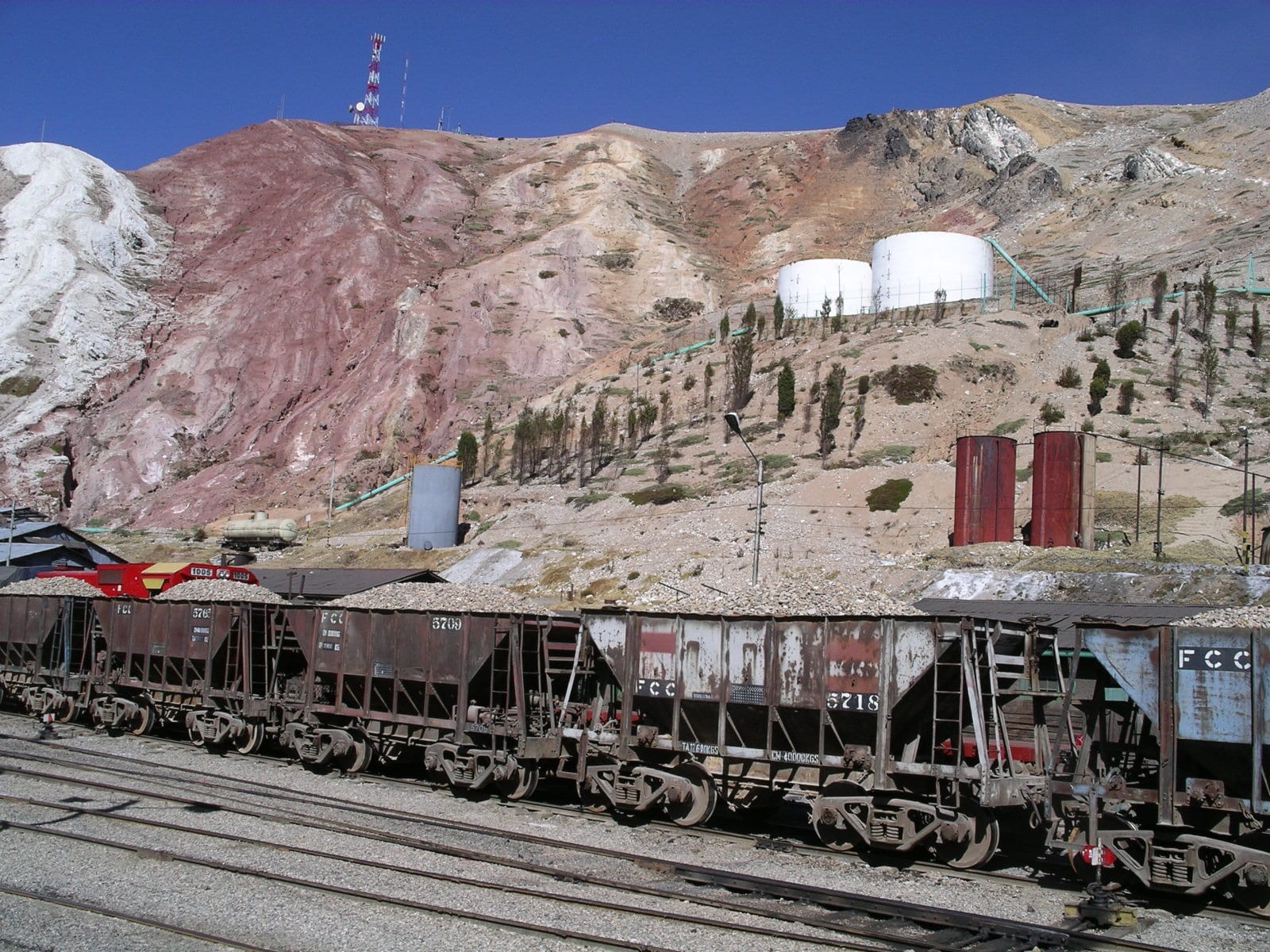
The railway station at La Oroya, Peru. (Maurice Chédel/Wikipedia via Courthouse News)
(CN) — Residents of the Andean city of La Oroya told the Inter-American Court of Human Rights this week of how decades of toxic contamination by a mining company have led to life-changing health implications and environmental damage.
They accuse Peru of human rights violations by failing in its obligations to regulate and control the toxic emissions of Doe Run Peru, which operated a metallurgical complex between 1997 and 2009.
Doe Run Peru was a subsidiary of Missouri-based Doe Run Company until 2007 but is now an independent Peruvian company.
The 30,000 inhabitants of La Oroya are tucked away high in the Andes 110 miles east of Lima. Its ash-colored mountain slopes are a visual reminder of the environmental damage caused by the smelting of heavy metals — mostly lead, zinc, and copper — that are carried in the veins of residents in one of the most polluted cities in the world.
Blood analysis found that 90% of the residents had blood lead levels that far exceeded standards deemed dangerous set by the World Health Organization. Those living in the area are more likely to develop a broad range of health problems such as anemia, skin disorders, kidney failure, infertility, lung and heart disease and cancer — with vulnerable groups like children and the elderly hit hardest.
More:
https://www.courthousenews.com/poisoned-peruvian-city-brings-case-against-the-state-for-human-rights-violations-to-the-inter-american-court/
Video showing info. on Doe Run, owned, controlled until recently by a U.S. American, Ira Rennert. It will tell you a lot US citizens simply never knew about the kind of companies US business people operate in "America's backyard." It's worth spending 10 minutes. More info. can be found, and photos any time one looks for it on "the system of tubes.".
(It was finally discovered by outsiders that the company would wait until well after dark and then dump all kinds of poisonous chemicals into the small river which runs past it in the valley. Also, the valley traps unbreathable air inside it where the workers are, and their homes. People's lifetimes are much shorter, and they learned pets don't last long if they try to buy fur friends for their children. )
Profile Information
Member since: 2002Number of posts: 160,527